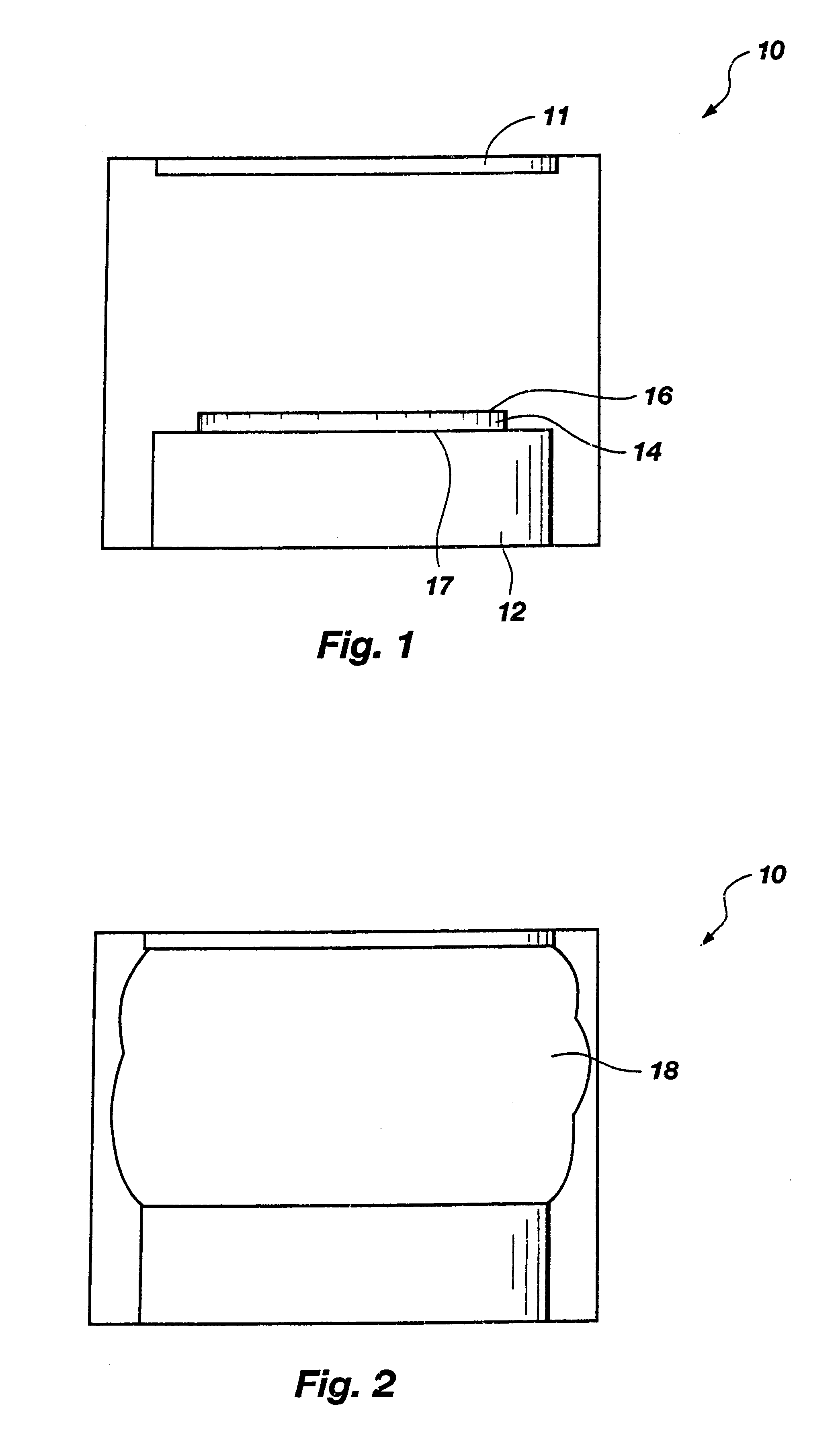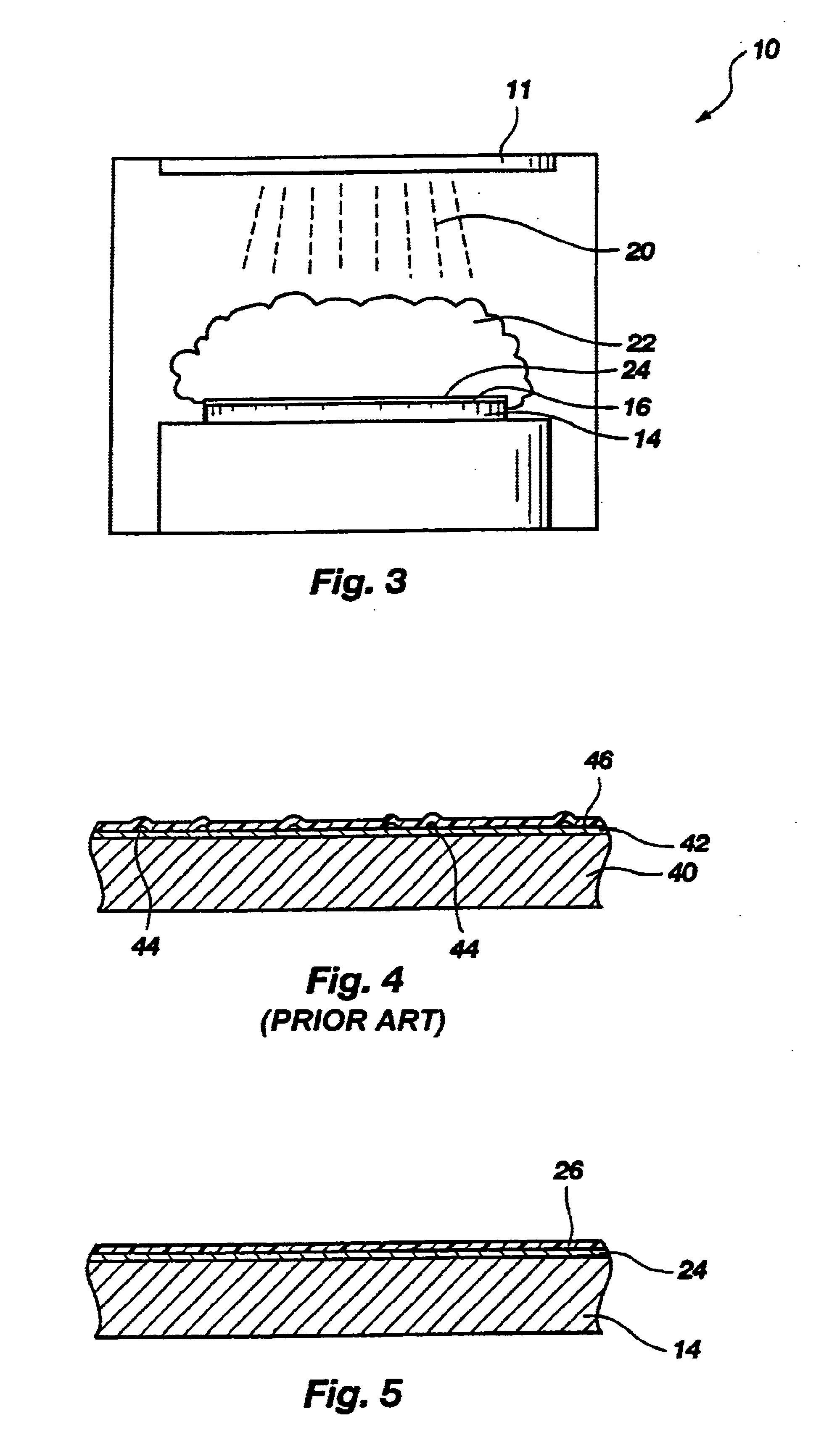Method of decontaminating process chambers, methods of reducing defects in anti-reflective coatings, and resulting semiconductor structures
a technology of anti-reflective coating and process chamber, which is applied in the direction of solid-state devices, basic electric elements, chemistry apparatus and processes, etc., can solve the problems of non-uniformity on the surface of the layer of silicon nitride, large quantities or magnitudes of in-film particles, etc., and achieve the effect of reducing the degree of distortion in the resultant mask and reducing the exposure of shielded areas
- Summary
- Abstract
- Description
- Claims
- Application Information
AI Technical Summary
Benefits of technology
Problems solved by technology
Method used
Image
Examples
Embodiment Construction
With reference to FIG. 1, a process chamber 10 of a PECVD reactor is illustrated, in which a DARC film including silicon, oxygen and nitrogen is deposited upon a semiconductor device structure. PECVD process chamber 10 includes a source 11 and a wafer support 12, which is also referred to as a susceptor. Preferably, wafer support 12 heats a wafer or other semiconductor device structure 14 disposed thereon from beneath by electrical resistance. Stated another way, an active surface 16 of semiconductor device structure 14, upon which material layers or structures (e.g., DARC films) will be deposited, is heated through the semiconductor device structure by wafer support 12. Exemplary electrical resistance-heated PECVD process chambers in which the DARC film fabrication method and the radio frequency plasma purge process of the present invention may be conducted include, without limitation, the process chamber of a Price DX2 PECVD reactor and the process chambers of other single-wafer a...
PUM
| Property | Measurement | Unit |
|---|---|---|
| Surface roughness | aaaaa | aaaaa |
| Surface roughness | aaaaa | aaaaa |
| Thickness | aaaaa | aaaaa |
Abstract
Description
Claims
Application Information
 Login to View More
Login to View More - R&D
- Intellectual Property
- Life Sciences
- Materials
- Tech Scout
- Unparalleled Data Quality
- Higher Quality Content
- 60% Fewer Hallucinations
Browse by: Latest US Patents, China's latest patents, Technical Efficacy Thesaurus, Application Domain, Technology Topic, Popular Technical Reports.
© 2025 PatSnap. All rights reserved.Legal|Privacy policy|Modern Slavery Act Transparency Statement|Sitemap|About US| Contact US: help@patsnap.com



